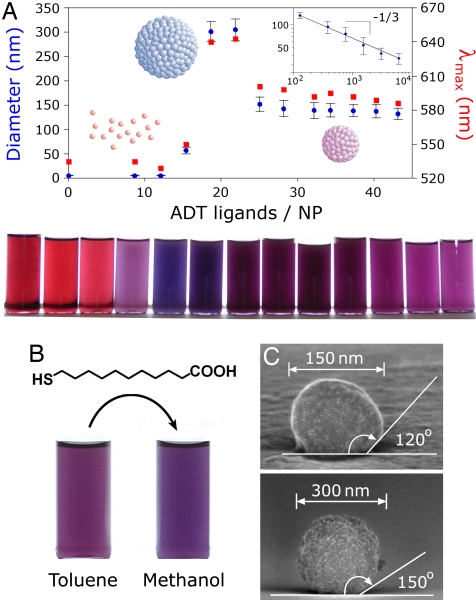Fig. 3.
Nanoparticle supraspheres prepared by LISA. (A) Diameters (blue markers) and the wavelengths of maximal absorption (λmax, red markers) for supraspheres formed by UV irradiation in pure toluene from NPs covered with various numbers of ADT ligands. Below the critical number of surface ligands per NP (here, ≈16), the photoinduced interactions between NPs are too weak to cause their aggregation. Above this limit, nucleation and growth of supraspheres occurs. (Inset) Suprasphere diameter decreases with increasing ADT concentration as D ∼ (CADT/CNP)−1/3, in agreement with the predictions of the nucleation-and-growth model (black line); here, the x axis refers to the total number (i.e., both surface-bound and free) of ADT ligands per NP. The vials in the bottom row are solutions of supraspheres arranged in the order of increasing ADT/NP ratio and correspond to the points in the plot. (B) Permanently cross-linked supraspheres can have their surfaces further derivatized (here, with 11-mercaptoundecanoic acid) and can be transferred to a more polar medium (here, methanol). (C) SEM images of two supraspheres adhered to and deformed on a silicon surface. Interestingly, the observed increase of the contact angle with increasing SS diameter suggest that these materials have plastic properties.

